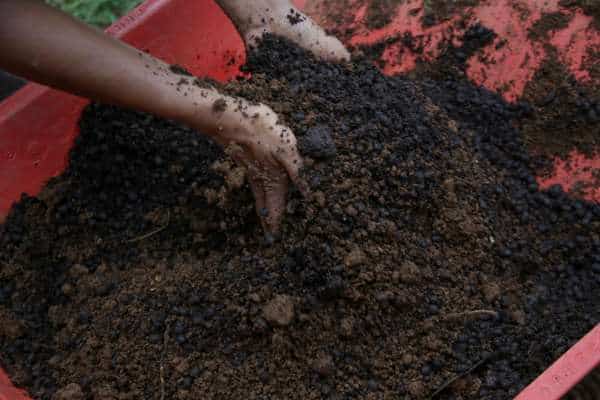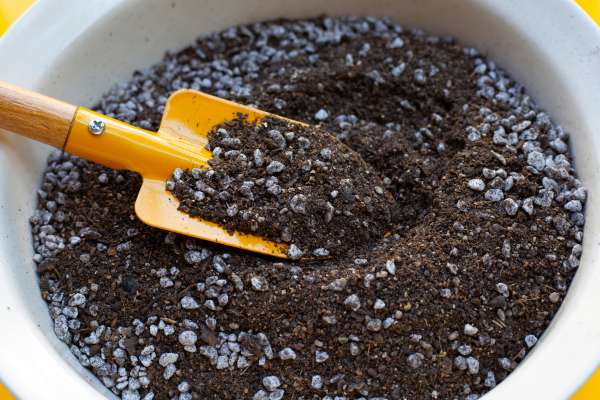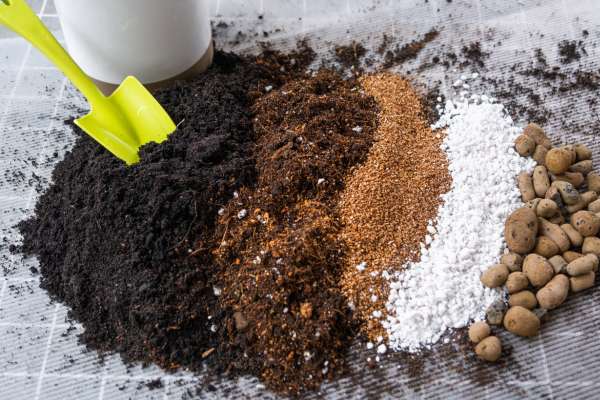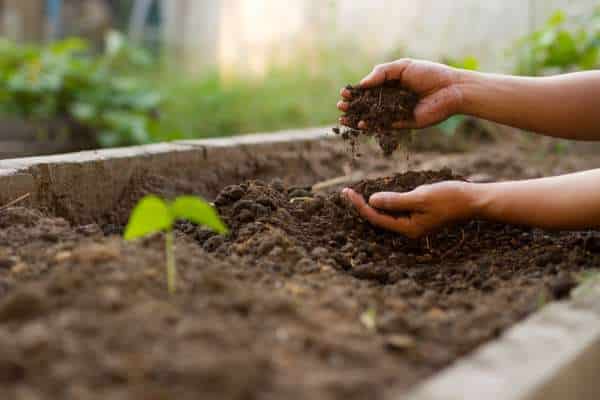Making the ideal starting point for your raised nursery bed is critical for the progress of your plants. Appropriately filling the bed includes an insightful blend of different parts to guarantee a supplement-rich and well-depleting climate. In this aid, we will investigate various layouts and methods for filling your nursery bed, taking into account factors, for example, soil structure, natural matter, and water maintenance. How To Fill A Raised Garden Bed By observing these rules, you’ll make way for a flourishing nursery, advancing solid plant development, and a plentiful collection. Whether you’re a carefully prepared landscaper or a beginner fan, understanding the basics of filling a raised nursery bed will add to the general essentialness of your green space.
1. 1/3 Compost, 1/3 Peat Moss, 1/3 Vermiculite

Choosing a blend of 1/3 manure, 1/3 peat greenery, and 1/3 vermiculite gives a magnificent establishment to filling a nursery bed. Manure contributes rich natural matter, upgrading soil fruitfulness and supporting a strong microbial environment. Peat greenery supports dampness maintenance, keeping the dirt from drying out excessively fast, while likewise further developing air circulation. Vermiculite, with its lightweight and dampness-retaining properties, keeps an even and well-depleting soil structure. This mix offers an optimal mix of supplements, water maintenance, and air circulation, establishing a climate helpful for solid plant development. Thought about a flexible blend, the 1/3 fertilizer, 1/3 peat greenery, and 1/3 vermiculite proportion take care of a great many plants and nursery conditions, settling on it a brilliant decision for developing a flourishing raised bed garden.
2. Layer: Cardboard, Straw, Soil Mix

Layering your raised nursery with cardboard, straw, and soil blend is an essential way to deal with establishing an even developing climate. The cardboard fills in as a successful weed hindrance, smothering undesirable vegetation and giving an establishment to the layers above. Adding straw contributes to natural matter and helps in dampness maintenance, forestalling soil disintegration while likewise making a defensive hindrance against outrageous temperatures. The dirt blend, put on the cardboard and straw layers, finishes the creation, giving a supplement-rich medium to establish roots to flourish. This strategy advances soil well-being as well as cultivates a reasonable and fill weed-safe raised garden bed. The layered methodology outfits the advantages of every part, guaranteeing an agreeable mix that upholds solid plant development and works on garden support.
3. Soil, Compost, And Perlite Blend

Creating a raised bed with a dirt, fertilizer, and perlite mix offers a unique blend that takes special care of the different requirements of your plants. The foundation of the soil gives fundamental minerals and a strong groundwork, while the consideration of fertilizer enhances the mix with the natural matter, cultivating supplement accessibility and microbial action. The expansion of perlite adds to further developed waste and air circulation, forestalling soil compaction and advancing sound root advancement. This even triplet establishes a climate that energizes powerful plant development, offering the right mix of design, ripeness, and porosity. Whether you’re developing blossoms, vegetables, or spices, the dirt, manure, and perlite mix lays out a sustaining starting point for your raised bed, making way for a flourishing and useful nursery space.
4. Compost, Topsoil, Aged Manure Mix

Making a raised nursery with a fertilizer, dirt, and matured excrement blend lays the basis for a supplement-rich and fruitful developing space. Manure brings natural matter, enhancing the dirt with fundamental supplements and advancing a sound microbial local area. Dirt gives a strong groundwork, guaranteeing a fair mineral piece for plant improvement. The consideration of matured excrement contributes extra supplements, upgrading soil richness and advancing long-haul soil wellbeing. This balanced blend not only supplies plants with the vital components for development but also further develops water maintenance and waste. Whether you’re developing vegetables, blossoms, or spices, the fertilizer, dirt, and matured compost blend offer a far-reaching answer for fill a thriving raised garden bed, supporting overwhelming plant development and a useful reap.
5. Gravel Base, Topsoil, Compost Layering
Carrying out a rock base, dirt, and manure layering procedure is a smart way to deal with building a raised nursery bed that focuses on waste and supplements rich soil. The rock base fills in as a viable seepage framework, forestalling waterlogging and guaranteeing ideal air circulation for plant roots. The layering of dirt on the rock establishment lays out a strong developing medium, giving fundamental minerals to establish improvement. Presenting fertilizer on top improves the blend in with natural matter, enhancing the dirt with supplements and advancing a flourishing environment. This layered synthesis guarantees a well-depleting and ripe climate, offering the ideal equilibrium for different plants in your nursery bed. With this blend, you make an establishment that upholds sound plant development as well as mitigates the gamble of water-related issues, adding to the drawn-out progress of your nursery.
6. 50% Topsoil, 25% Compost, 25% Sand
Selecting an organization of half dirt, 25% manure, and 25% sand gives an even mix that tends to key variable for effective raised bed cultivating. Most of the dirt guarantees a strong groundwork, providing plants with fundamental minerals and advancing durable root improvement. The expansion of fertilizer improves the blend in with natural matter. Upgrading soil ripeness and encouraging a flourishing microbial local area. Consolidating sand adds to further developed seepage and air circulation, forestalling soil compaction and supporting ideal root well-being. This painstakingly adjusted proportion offers an optimal mix of construction, ripeness, and porosity, establishing a climate that obliges a great many plants while advancing in general soil well-being in your raised bed.
7. Topsoil, Organic Matter, Perlite Mix

Developing a raised nursery bed with a speck of dirt, natural matter, and perlite blend is an essential methodology that focuses on soil design and plant imperativeness. The dirt gives a strong groundwork, offering fundamental minerals for plant development. The expansion of natural matter, like fertilizer or very much decayed compost. Improves the blend in with supplements and advances a sound soil biological system. Perlite, with its lightweight and permeable nature, upgrades waste and air circulation, forestalling soil compaction and guaranteeing ideal root oxygenation. This balanced blend establishes a reasonable climate that cultivates vigorous plant improvement, energizes valuable microbial action, and supports watering the board. Whether you’re developing blossoms, vegetables. Or spices, the dirt, natural matter, and perlite blend set up a flourishing and versatile fill raised garden bed.
8. Mulch, Topsoil, Compost Composition.
Building a raised nursery bed with mulch, dirt, and manure pieces is a methodology that underscores soil well-being and water maintenance. Mulch, as the base layer, fills in as a successful weed silencer and dampness controller. Forestalling water vanishing and advancing a steady soil temperature. The dirt layer gives a supplement-rich base to establish development, guaranteeing a hearty mineral stock. The expansion of manure improves the blend in with natural matter, further upgrading soil fruitfulness and supporting a different microbial local area. This smart synthesis establishes an amicable climate that supports plant roots as well as moderates dampness, limits weed contest, and cultivates general soil essentialness in your nursery bed.
9. Bottom Layer Gravel, Then Mix Soil.
Beginning your raised nursery bed with a base layer of rock followed by a blend of soil is a useful methodology that tends to seepage and soil structure. The rock base fills in as a successful waste framework, forestalling waterlogging and guaranteeing overabundance of water has a pathway to get away. This is especially advantageous in forestalling root decay and other dampness-related issues. Layering the dirt blend on top of the rock gives a strong groundwork to establish roots, offering a mix of dirt, fertilizer, and other natural matter. This blend advances supplement accessibility as well as guarantees appropriate air circulation for ideal root improvement. The rock and soil blend establishes a well-depleting yet fruitful climate. Finding some kind of harmony that upholds the general well-being and efficiency of your plants in the raised nursery bed.
10. Combine Topsoil, Compost, And Sand Evenly.
Consolidating dirt, manure, and sand equally in your raised nursery bed offers a flexible and balanced developing medium. Dirt gives a strong groundwork, plentiful in fundamental minerals for plant improvement. The expansion of manure contributes to natural matter, improving soil richness and supporting a flourishing microbial local area. Integrating sand with the general mish-mash further develops seepage and air circulation, forestalling soil compaction and advancing ideal root wellbeing. By mixing these parts equally, you make a decent and supplement-rich soil structure that obliges a different scope of plants. This mix not only guarantees a steady and strong climate for root development yet in addition empowers solid soil structure. Cultivating a thriving nursery in your raised bed.
Conclusion
Filling a raised nursery bed is a principal move toward establishing an optimal developing climate for your plants. By integrating the right blend of dirt, manure, and extra corrections. You give the essential supplements, seepage, and air circulation for plant roots to prosper. The framed strategies offer flexibility, taking special care of different plant needs and local circumstances. Keep in mind, that the critical lies in balance – an equilibrium of natural matter, construction, and dampness maintenance. As you leave on your planting process. These bits of knowledge will enable you to develop a lively and useful nursery in your raised beds. With legitimate soil planning, you’re not simply sowing seeds. You’re developing the potential for a thriving and manageable nursery that gives pleasure and abundance for many years. Cheerful planting!






